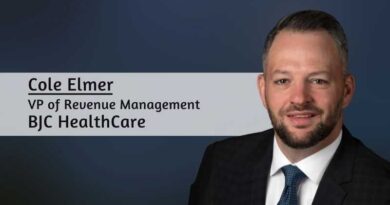Attaining Frictionless Revenue Cycle Management
By Venkat Bhamidipati, EVP & CFO, Providence St. Joseph Health
When I joined Providence St. Joseph Health, one of the country’s largest health systems, I understood health care to be a sector ripe for innovation. My expertise is not on the clinical side, so I have left that to others. My focus has been on a topic that is decidedly less flashy, but no less critical: revenue cycle management.
While it may not make headlines, innovation in revenue cycle management is imperative for the type of transformation that health care needs. In 2018, revenue cycle inefficiencies were responsible for more than $500 billion in U.S. healthcare costs, primarily due to an overreliance on manual, outmoded processes built on physical correspondence, legacy data systems, and employees who spend hours calling insurers on the status of claims. Compounding the impact of these inefficiencies, health care providers today are confronted with headwinds that threaten to worsen their revenue cycle yields on multiple fronts: rapid growth in patient liability at a rate of up to five times that of overall reimbursement, payers challenging and denying a significant number of claims (with 20 – 25% of claims rejected, up from 10 – 15% just 3 years ago), and an increasingly complex environment of regulatory reform and new payment models that will exacerbate these challenges for health systems. Given the crucial importance of a health system’s revenue yield to its ability to re-invest in the health of its community, addressing these frictions in the revenue cycle must be a top priority.
In a simpler time, revenue cycle management was a straightforward process that could be left to the individual talents of billers capable of eking a margin from the billing cycle. As health systems have scaled and payment methodologies have increased in complexity, however, more and more providers are searching for ways to standardize processes, automate workflows, and unlock economies of scale.
Providence St. Joseph Health is turning to technology, commonly used in banking, to transform its revenue cycle. In addition to our pursuit of continuous improvement in core legacy revenue functions and patient-facing activities, we’re building a hub for insights and innovations that will serve as a common base for the entire revenue cycle. To this end, we recently acquired Lumedic, a next-generation blockchain-based revenue cycle platform. With our new partner, we are advancing shared ledger technology, smart contracts, and machine learning for an efficient, secure, and trusted end-to-end platform. Moreover, we are identifying opportunities to drive efficiencies and modernize our revenue cycle – for instance, by streamlining the underlying business processes unique to referrals and prior authorizations. While these prior authorizations typically require manual, time-consuming processes where hospital employees track down information on a payer’s website and hope that it is up to date, blockchain-enabled technology can update a decentralized ledger in real time rather than individually validating or updating files or data systems.
As health systems have scaled and payment methodologies have increased in complexity, however, more and more providers are searching for ways to standardize processes, automate workflows, and unlock economies of scale.
A blockchain-enabled approach also has the added benefit of enhanced security, given that it leverages modern cryptography, public-key infrastructure (PKI), decentralization and consensus protocols that render it resistant to hacking. Many people ask: Why go to the trouble of making dramatic changes to the revenue cycle process when we might do just as well by merely improving on the current model? In our view, while incremental improvements through increased standardization and automation can be beneficial in the short-term, these efforts do not make the fundamental changes necessary for transformation. Approaching a process differently can work. Uber, for example, didn’t just fix the taxi dispatcher model. Instead, it changed the model, using a systematic approach to applying rules for the user experience. It took the inefficiencies of dispatching out of the system, increased ease-of-use and transparency, ultimately resulting in a better, more hassle-free ride.
I realize this may sound futuristic. However, if you’re not convinced about blockchain, consider that a whole country is adopting it for medical care. Estonia uses blockchain technology to control their health records and facilitate the proper use of the records by the medical community. The system is touted for providing a collaborative ecosystem and a single immutable data source for health care professionals and patients.
As we see it at Providence St. Joseph Health, there is a strong case for building out a blockchain platform and applying it to the revenue cycle. There is a multitude of benefits beyond the uses we are currently working on, but, for now, our focus is on unlocking the efficiencies that blockchain technology enables. Imagine a world that runs by standardized, enforced rules instead of passing paper back and forth. Imagine an innovative network that will facilitate seamless sharing of trusted information and collaboration on integrated business processes, reducing inefficiencies in the health care system, and improving the patient experience. Our investments in blockchain technology aim to help make our vision of a frictionless revenue cycle a reality.



